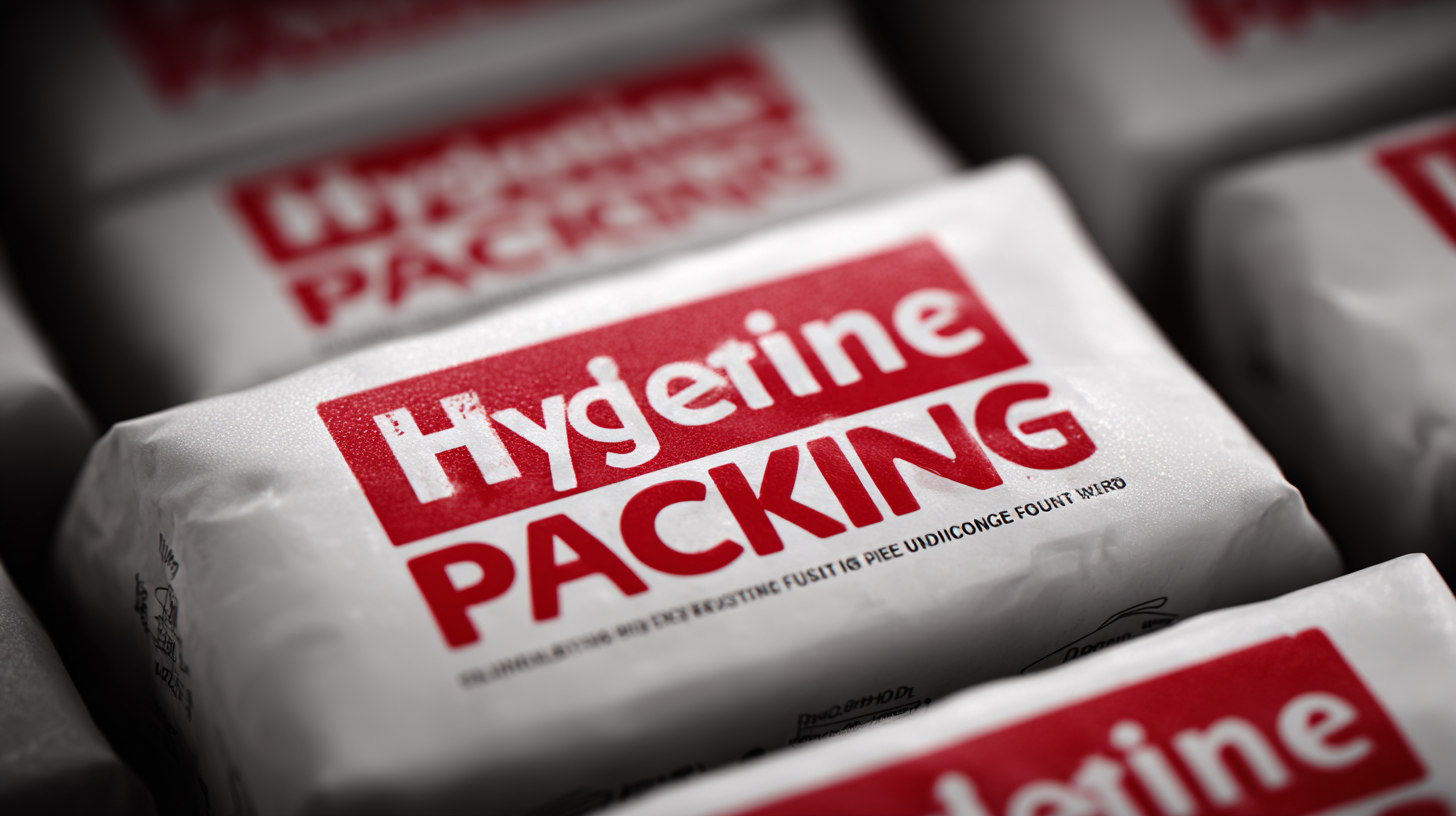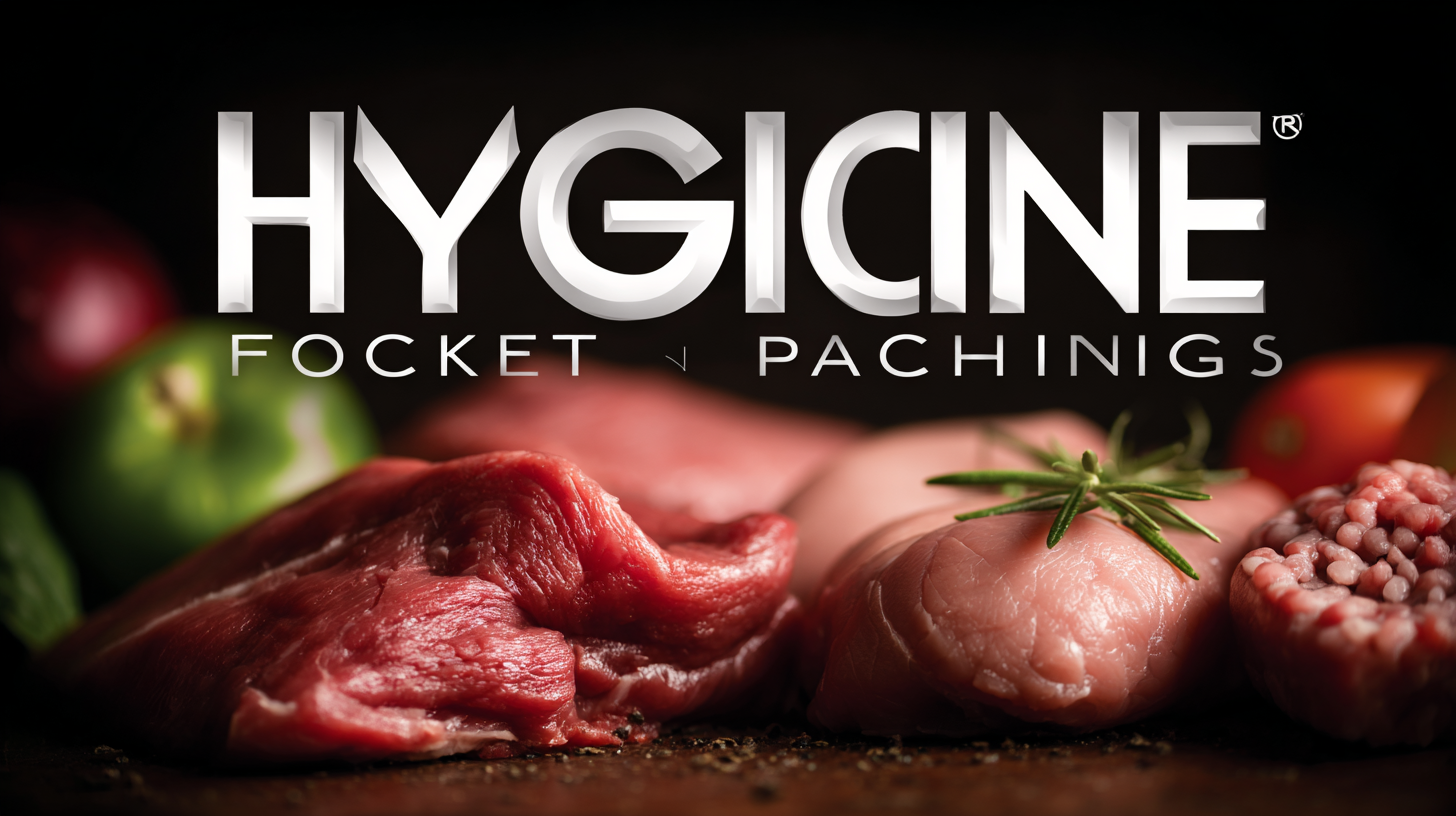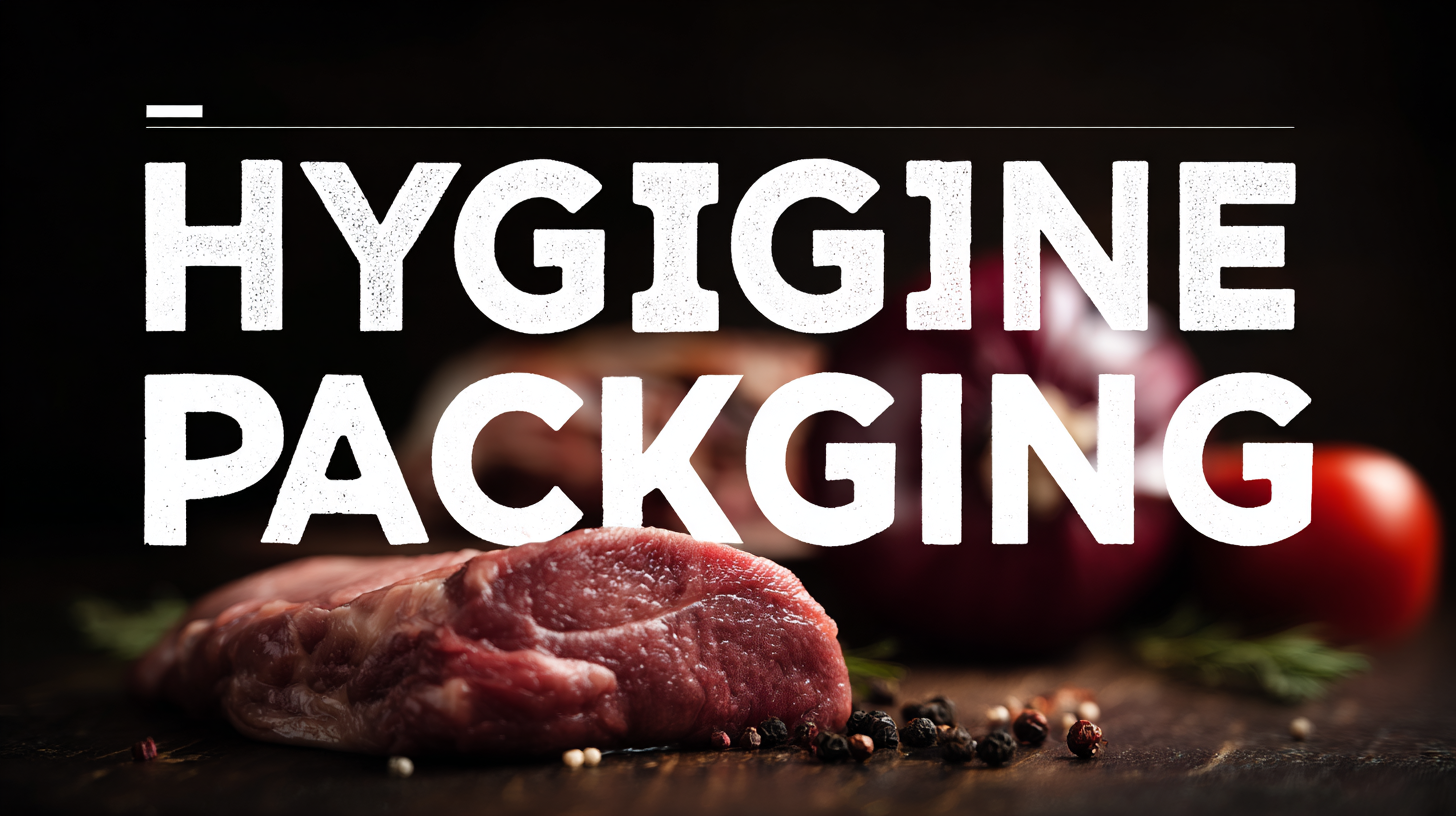
Exploring Best Hygienic Food Packaging Solutions in the Meat Processing Industry
In the meat processing industry, ensuring the safety and quality of products is paramount, and one of the critical factors contributing to this is Hygienic Food Packaging. As consumers become increasingly health-conscious, the demand for effective packaging solutions that prevent contamination and preserve freshness has surged. This ultimate guide delves into the various hygienic food packaging solutions available, examining their importance, types, and innovations that are shaping the future of meat packaging. From biodegradable materials to advanced sealing technologies, we will explore how these solutions not only comply with strict industry regulations but also enhance consumer trust. Join us as we navigate through the best practices and cutting-edge approaches that the meat processing sector is adopting to maintain high hygiene standards, ultimately ensuring that consumers receive safe and high-quality products.

Innovative Biodegradable Packaging Options for Meat Products
The meat processing industry is increasingly recognizing the importance of sustainable packaging solutions. With growing concerns about environmental impact, innovative biodegradable packaging options are becoming a viable alternative to traditional plastic. These eco-friendly materials not only help reduce waste but also maintain the freshness and safety of meat products. For instance, packaging made from plant-based materials or compostable films offers similar protection while minimizing the carbon footprint.
In addition to their environmental benefits, biodegradable options can enhance the shelf life of meat products by incorporating antimicrobial properties directly into the packaging. This innovation can significantly reduce food spoilage and waste, catering to both consumer demands for sustainability and the industry's need for efficient preservation. The integration of smart technologies, such as indicators that signal spoilage, can further optimize the safety and quality of meat, aiding consumers in making informed choices. As the meat processing industry moves towards greener practices, embracing these biodegradable packaging solutions is not just about compliance; it’s about leading the way in responsible food production.
Understanding the Role of Vacuum Packaging in Meat Preservation
Vacuum packaging has emerged as a pivotal technology in the meat processing industry, playing a crucial role in preserving the quality, freshness, and safety of meat products. By removing air from the packaging, vacuum sealing significantly reduces the growth of aerobic bacteria and mold, which are primary culprits in food spoilage. This method not only extends shelf life but also helps maintain the meat's original flavor, texture, and nutritional value, making it a preferred choice for processors aiming to deliver high-quality products to consumers.
In addition to enhancing preservation, vacuum packaging offers practical benefits for distribution and storage. The compact nature of vacuum-sealed products allows for efficient use of storage space and reduces transportation costs. Furthermore, the packaging provides a barrier against moisture and oxygen, protecting the meat from environmental factors that could lead to deterioration. As consumers increasingly demand longer-lasting, safer meat options, the role of vacuum packaging will continue to be integral in meeting these needs while ensuring that quality is never compromised.
Best Hygienic Food Packaging Solutions in the Meat Processing Industry
This chart illustrates the effectiveness of various hygienic food packaging solutions used in meat preservation, focusing particularly on vacuum packaging.
The Advantages of Reusable Packaging Systems in the Meat Industry
 The meat processing industry is increasingly embracing reusable packaging systems, a shift that brings numerous advantages in terms of hygiene, sustainability, and cost-effectiveness. Unlike traditional single-use packaging, reusable systems are designed for multiple cycles, significantly reducing the amount of waste generated. These systems can be sterilized and reused, ensuring that meat products are kept safe from contamination while also minimizing the environmental impact associated with disposable packaging. By maintaining high hygiene standards, reusable options help to preserve product integrity and extend shelf life.
The meat processing industry is increasingly embracing reusable packaging systems, a shift that brings numerous advantages in terms of hygiene, sustainability, and cost-effectiveness. Unlike traditional single-use packaging, reusable systems are designed for multiple cycles, significantly reducing the amount of waste generated. These systems can be sterilized and reused, ensuring that meat products are kept safe from contamination while also minimizing the environmental impact associated with disposable packaging. By maintaining high hygiene standards, reusable options help to preserve product integrity and extend shelf life.
Additionally, the transition to reusable packaging can lead to substantial cost savings over time. While the initial investment may be higher, the long-term benefits of reduced material costs and waste disposal fees make reusable systems a financially sound choice. Furthermore, these systems facilitate better supply chain efficiency, enabling meat processors to streamline operations and enhance productivity. As the industry continues to evolve, the implementation of reusable packaging will not only promote a cleaner environment but also align with consumer preferences for sustainable practices.
Composite Materials: Balancing Sustainability and Food Safety
As the meat processing industry continues to grow, the demand for hygienic food packaging solutions is becoming increasingly crucial. The convergence of sustainability and food safety has led to the exploration of composite materials, which offer significant advantages. In 2024, the specialty gas cylinder market is projected to reach $5.0633 billion, reflecting robust growth that highlights the industry's shift toward innovative packaging technologies. By 2032, this market is expected to expand to an impressive $8.2282 billion, with a compound annual growth rate (CAGR) of 6.26% during the forecast period. This growth underscores the need for materials that prioritize both sustainability and safety.
Furthermore, the demand for green composite materials is on the rise, estimated to reach $32.33 billion in 2024 and surpassing $82.78 billion by 2037, growing at a CAGR of over 7.5%. High-barrier packaging films are positioned to thrive in this environment, as they are designed to extend product shelf life by effectively blocking oxygen and water permeation. This is crucial in a sector where food safety and minimizing waste are paramount. As manufacturers adopt these advanced solutions, both consumers and the environment stand to benefit.
Exploring Best Hygienic Food Packaging Solutions in the Meat Processing Industry - Composite Materials: Balancing Sustainability and Food Safety
| Packaging Type | Material | Sustainability Rating | Food Safety Compliance | Cost per Unit ($) |
|---|---|---|---|---|
| Vacuum Packaging | Nylon/Polyethylene | High | ISO 22000, FDA | 0.15 |
| Modified Atmosphere Packaging | Polypropylene/PLA | Medium | HACCP, ISO 9001 | 0.25 |
| Shrink Film | PVC/Polyolefin | Medium | FDA, GMP | 0.20 |
| Edible Coatings | Chitosan/Casein | High | FDA Relevant | 0.30 |
| Biodegradable Containers | PLA/Starch Blends | High | ISO 22000 | 0.40 |
Technological Advances in Active Packaging for Meat Hygiene
The meat processing industry has witnessed significant advancements in active packaging technologies that enhance food hygiene and safety. Recent studies indicate that active packaging can effectively extend the shelf life of meat products by controlling the microenvironment around them. For instance, reports from the Food Packaging Forum highlight that the incorporation of antimicrobial agents into packaging materials can reduce bacterial growth by up to 99% during storage. This is particularly crucial given that approximately 1 in 6 Americans experience foodborne illnesses each year, with meat products often being a key contributor.
Moreover, the integration of smart packaging solutions, such as sensors that monitor temperature and gas levels, allows for real-time tracking of meat freshness. According to a market analysis by Research and Markets, the global active and intelligent packaging market for meat is projected to reach $4 billion by 2026, underscoring the industry's shift towards more hygienic solutions. These innovations not only improve product safety but also enhance consumer trust, as transparency regarding meat quality becomes increasingly critical in today's food supply chain. Such advancements represent a substantial leap forward in ensuring that meat products meet rigorous hygiene standards while maintaining their quality for consumers.




